DJI Mini 3 vs Mini 2 vs Mini 3 Pro: Differences and Similarities
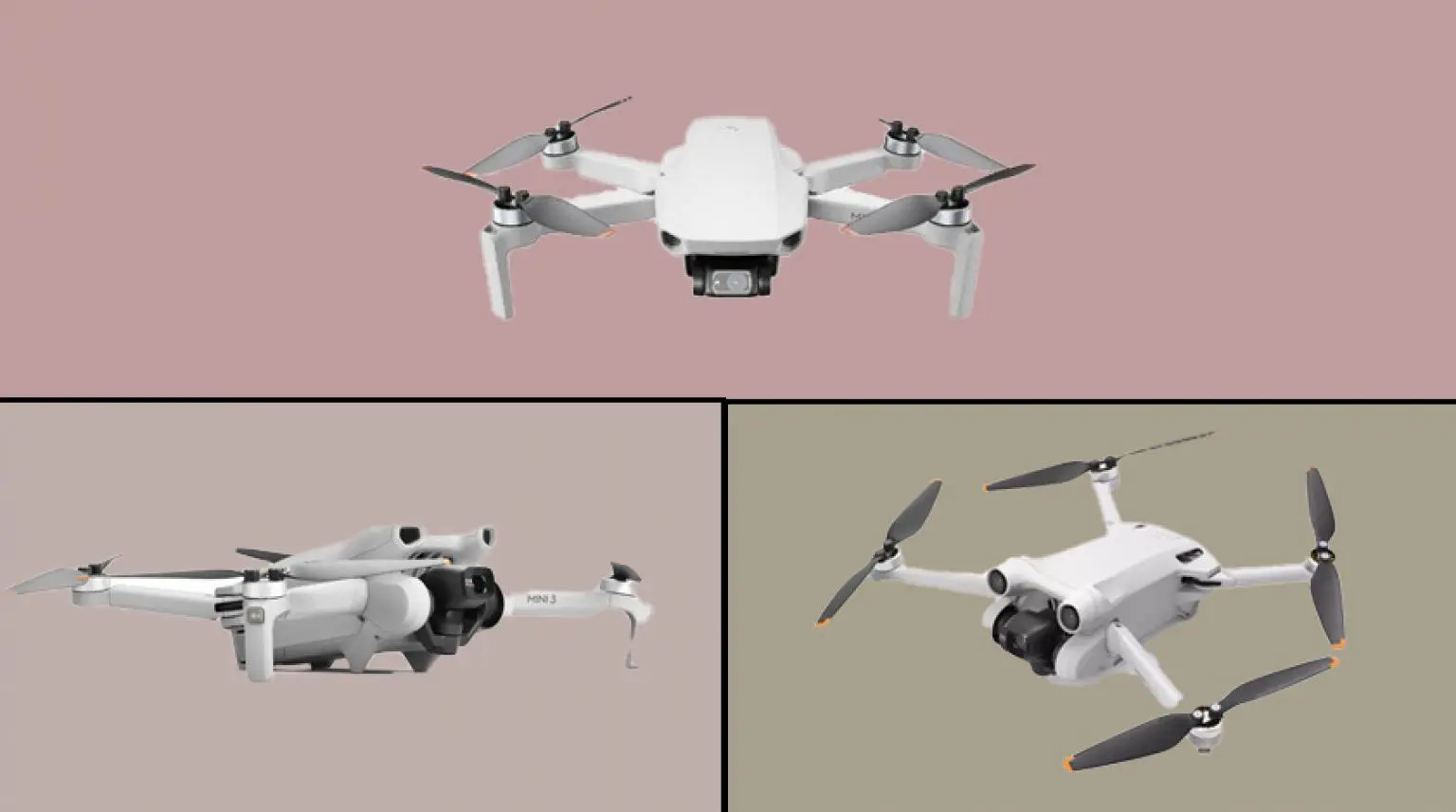
The DJI Mini 3 is a stripped down version of the DJI Mini 3 Pro, but an upgrade over the DJI Mini 2. In this article we will compare the Mini 3, Mini 3 Pro and Mini 2 and highlight the differences and similarities. And of course, we help you choose the best drone for you.
It was remarkable when the DJI Mini 3 Pro came out, leaving a gap between the DJI Mini 2 and Mini 3 Pro. Fortunately, that gap has now been filled with the arrival of the DJI Mini 3 and certainly has improvements over the DJI Mini 2, but is it also a better drone for you?
The DJI Mini 2 has a different design and is the oldest of the three drones. The DJI Mini 3 has taken over the design of the Mini 3 Pro so that it can also film upwards and vertically. Of course, the Mini 3 has sacrificed specifications to have a lower price tag. Anyway, they are all drones that belong in the list of the best drones of today.
DJI Mini 3 vs Mini 2 vs Mini 3 Pro: General specs
Let’s first look at a table with the general drone specifications.
| DJI Mini 3 Pro | DJI Mini 3 | DJI Mini 2 | |
| Megapixels | 48MP | 12MP | 12MP |
| Weight | 249 gram | 248 gram | 249 gram |
| Sensor size | 1/1.3″ CMOS | 1/1.3″ CMOS | 1/2.3″ CMOS |
| Apeture | f/1.7 | f/2.8 | f/2.8 |
| Flight time | 34/47 minutes | 38 minutes | 31 minutes |
| Video | 4K/60fps | 4k/30fps | 4K/30fps |
| Sensor | Front, back, under | No | No |
| APAS | 4.0 | No | No |
| Tracking | ActiveTrack 4, Spotlight, POI | No | No |
| Reach | 12km | 12km | 8km |
| Transmission | O3 | O2 | O2 |
| HDR-photos | Yes | Yes | No |
| HDR-videos | Yes | Yes | No |
We can see that the DJI Mini 3 and Mini 2 both film in 4K at 30 frames per second. Now, it seems as if there is no progress, but the sensor of the Mini 3 has become a lot bigger. In addition, it is now possible to take HDR photos and videos.
DJI Mini 3 vs Mini 2 vs Mini 3 Pro: Price
The DJI Mini 3 Pro is the most advanced model and therefore also the most expensive of the three.
Today’s prices for the DJI Mini 3 Pro
The DJI Mini 3 Pro is for sale from $759 (with RC-N1 controller) at Amazon.com.
Today’s prices for the DJI Mini 3
The DJI Mini 3 drone is for sale from $550 dollars at Amazon.com.
Today’s prices for the DJI Mini 2
The DJI Mini 2 is for sale from $509 with the fly more package at Amazon.com.
If you have a small budget, then the DJI Mini 2 is of course the logical choice. But, does it also have the functions you expect from the drone? You will find that out in the rest of this article.
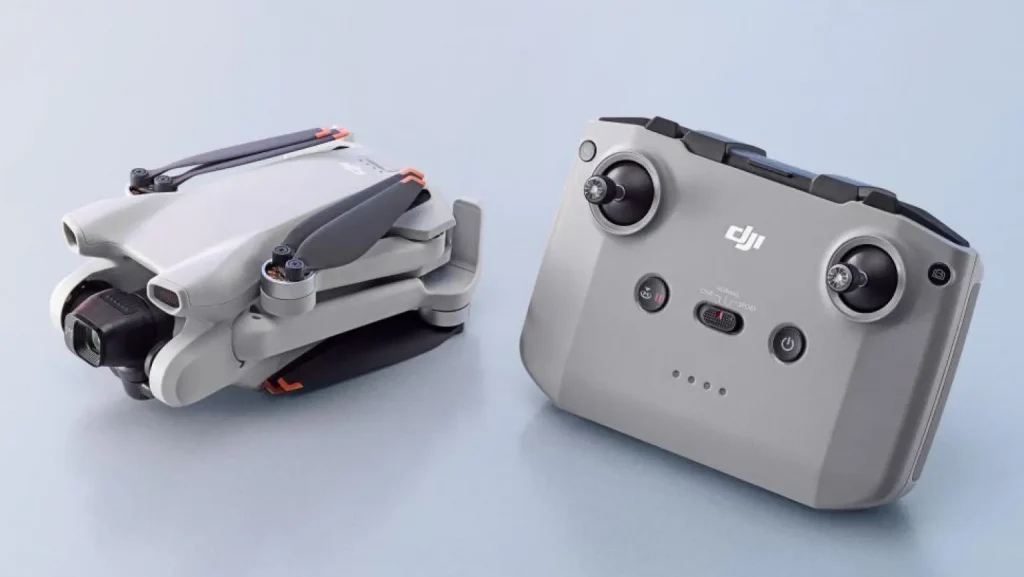
DJI Mini 3. Photo credit: DJI
DJI Mini 3 vs Mini 2 vs Mini 3 Pro: Build and Design
Where the DJI Mini 2 still uses the Mavic-like design, the Mini 3 and Mini 3 Pro have been completely renewed. For example, the ventilation ports are in other places and there is room for the gimbal to also aim upwards to 90 degrees.
Weight
All three drones weigh less than 250 grams. This means that they are considered recreational toys and are therefore allowed to fly around buildings and over people, but not over crowds. It is also important to state that you do not have to get a pilot’s license. This is only necessary for drones that weigh from 250 grams. It is mandatory to register the drone with the FAA though.
| DJI Mini 3 Pro | DJI Mini 3 | DJI Mini 2 | |
| Weight | 249 grams | 248 grams | 249 grams |
The DJI Mini 3 may be the lightest at 248 grams, but it is the largest ‘mini’ drone. Especially when unfolded, we see that the Mini 3 is slightly larger than the other two drones. In practice, however, this does not make much of a difference when we look at compactness.
Controller
Both the Mini 2, Mini 3 and Mini 3 pro can use the standard DJI RC-N1 controller. This controller needs a smartphone to act as a screen. It are only the DJI Mini 3 and Mini 3 Pro that can use the DJI RC controller. This smart controller has a built-in screen with a size of 5.5 inches and a brightness of up to 700 nits. If you use the DJI RC with the DJI Mini 3, you cannot use all the functions that the controller offers. This is because the Mini 3 has less functionalities than the DJI Mini 3 Pro.
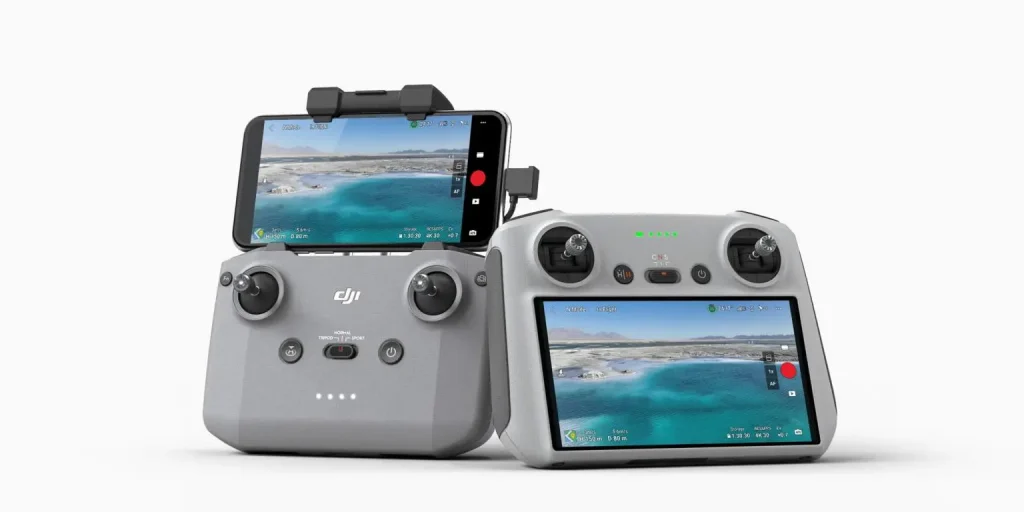
DJI RC-N1 and DJI RC Smart controller. Photo Credit: DJI
DJI Mini 3 vs Mini 2 vs Mini 3 Pro: Battery and flying
We see more significant differences between the three models when we look at the battery. A big advantage of the DJI Mini 3 is that it can stay in the air a lot longer than the DJI Mini 2. The Mini 3 can fly for up to 38 minutes, while the Mini 2 can stay in the air for up to 31 minutes.
If you use the Intelligent Flight Battery Plus, you can even fly for up to 51 minutes with the Mini 3. However, this battery is not for sale in Europe and would make the drone heavier than 250 grams, which means you need a pilot’s license. But, in the US this battery is for sale, so you could fly up to 51 minutes if you’d like. While flight time is 22% higher, capacity is only up 9% from 2453 mAh to 2250 mAh.
| DJI Mini 3 Pro | DJI Mini 3 | DJI Mini 2 | ||
| Flight time | 34/47min | 38/51 min | 31min |
The DJI Mini 3 Pro stays in the air for up to 34 minutes with the standard battery and up to 47 with the larger battery.
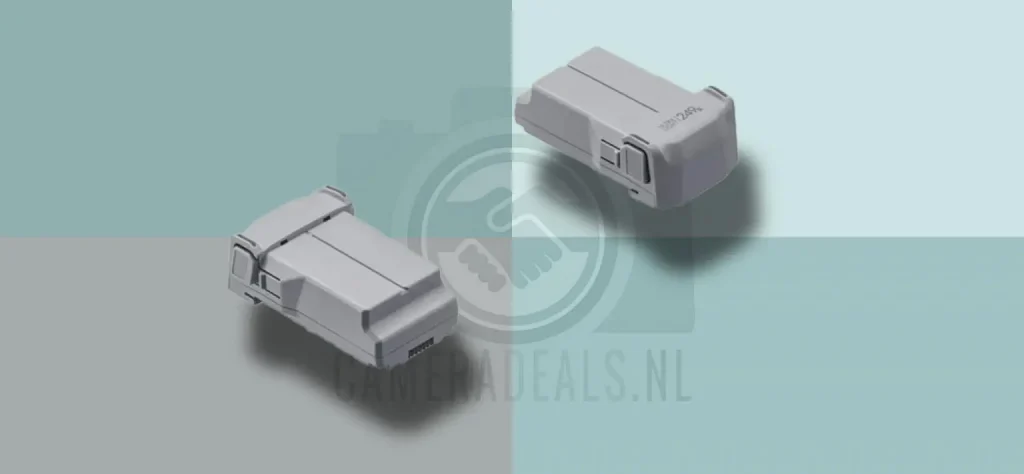
DJI’s big and small battery. Photo Credit: DJI
Speeds
The fact that the Mini 3 has a larger battery does not mean that it can also fly faster. It is true that all three drones have the same maximum speeds: 57.6 km / h. However, the Mini 3 Pro can descend a little faster than the other two drones.
| DJI Mini 3 Pro | DJI Mini 3 | DJI Mini 2 | ||
| Max. speed |
|
|
|
|
| Wind resistance | 10.7 m/s (Level 5) | 10.5 m/s (Level 5) | 10.5 m/s (Level 5) |
Does descending faster matter? For a normal landing, it doesn’t make much difference, but if you want to make a cinematic crane effect, a quick descent with a good tilt can be extra nice. The three drones have the same O2 wireless transmission system. This means that the controllers have a maximum range of 10km in perfect conditions. Although this distance could never be achieved with older drones due to lower flight times, this is theoretically possible with flight times of around 40 minutes.
| DJI Mini 3 Pro | DJI Mini 3 | DJI Mini 2 | ||
| Ascend speeds | 5 m/s | 5 m/s | 5 m/s | |
| Descend speeds | 5 m/s | 3.5 m/s | 3.5 m/s |
Of course, you can only achieve this distance if there are no buildings, masts, or mountains between the signal. It is important to always be able to see the drone with the bare eye. Because the Mini series is quite small, you can probably fly up to 500 meters before the drone is no longer visible to the bare eye.
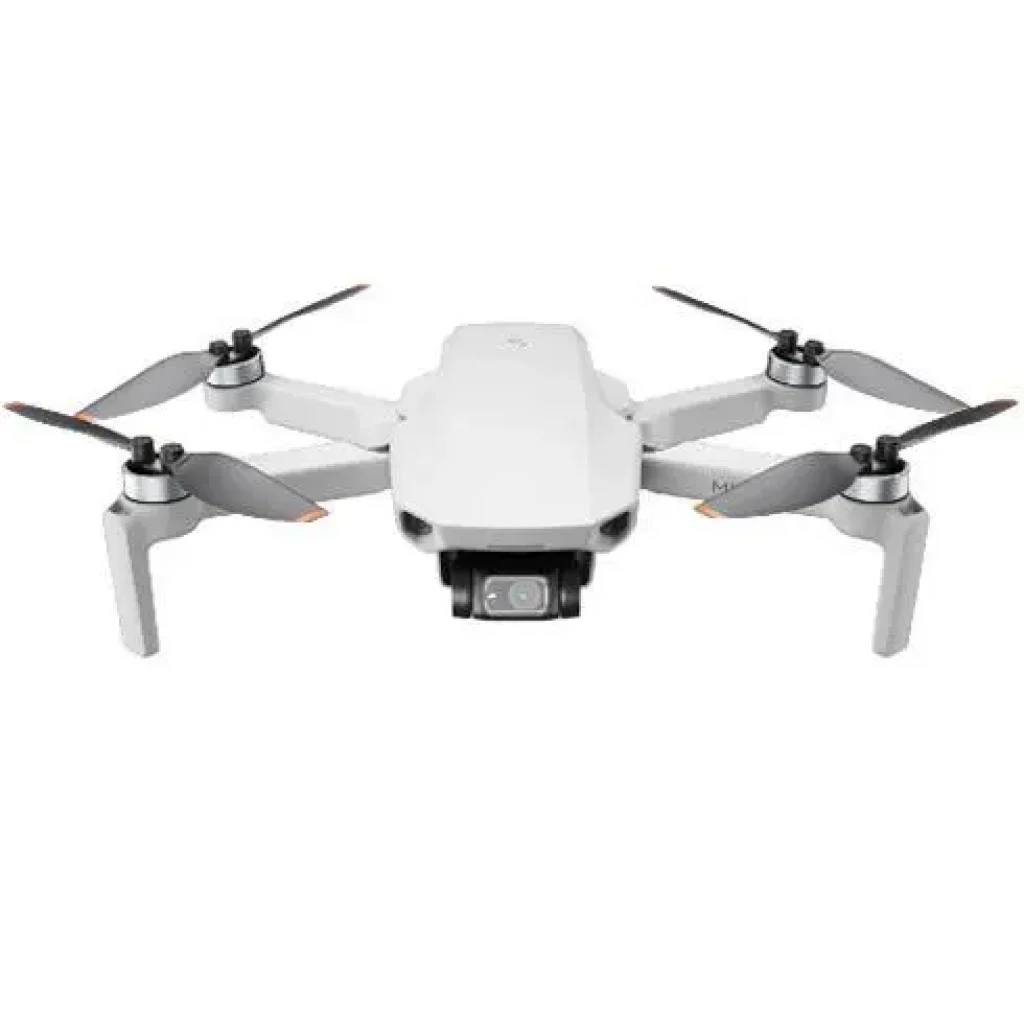
DJI Mini 2. Photo Credit: DJI
DJI Mini 3 vs Mini 2 vs Mini 3 Pro: Safety
The DJI Mini 2 and Mini 3 only have sensors on the bottom of the drone. These ensure good positioning and especially help with a precise landing. However, the DJI Mini 3 Pro has sensors on the front and back that recognize obstacles. This smart system can avoid the obstacles during the flight, without interrupting the flow of the video. You will therefore make the safest flights on the Mini 3 Pro thanks to the obstacle sensors.
The DJI Mini 3 Pro is also the only one that has the APAS 4.0 system. This is the system that allows the drone to fly around objects without accidents and flight interruptions.
DJI Mini 3 vs Mini 2 vs Mini 3 Pro: Photography
Where the DJI Mini 3 and Mini 2 can both take 12 megapixel photos, the Mini 3 Pro can produce images of 48 megapixels. An important difference is that the sensor of the Mini 3 and Mini 3 pro is larger (1/1.3″) than that of the Mini 2 (1/1.2″). The larger sensor ensures more light and information recording and therefore better photos (and videos).
| DJI Mini 3 Pro | DJI Mini 3 | DJI Mini 2 | ||
| Diafragma | f/1.7 | f/1.7 | f/2.8 |
It should be clear that the Mini 3 Pro with 48 megapixels can take more detailed photos than the other two models. Both the Mini 3 Pro and Mini 3 feature HDR photography. During this High Dynamic Range photography, extra information is retrieved from the highlights and shadows, which results in more beautiful photos.
| DJI Mini 3 Pro | DJI Mini 3 | DJI Mini 2 | ||
| Max. photo resolution |
|
|
|
The Mini 3 Pro and Mini 3 also have a smaller maximum aperture of f/1.7 compared to the f/2.8 on the Mini 2. This also provides extra light capture and therefore better performance in the dark. The aperture is fixed on all three drones and cannot be adjusted. If you want to be able to adjust this, you will have to upgrade to the DJI Mavic models.
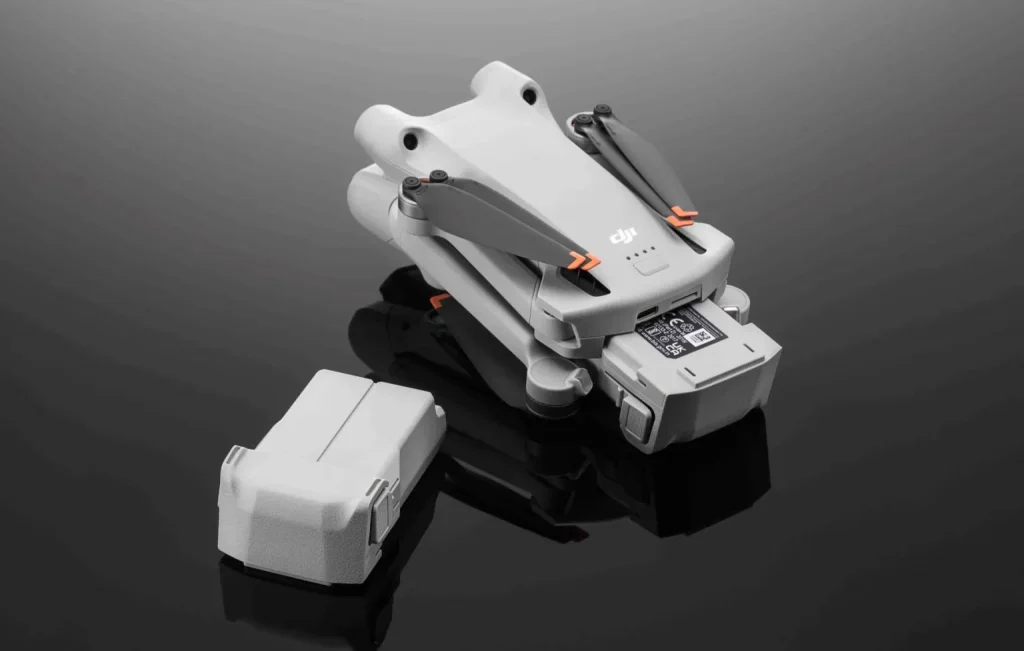
DJI Mini 3 Pro with big battery. Photo Credit: DJI
DJI Mini 3 vs Mini 2 vs Mini 3 Pro: Film
All three drones can film in 4K 30fps, but it is the DJI Mini 3 Pro that can also film in 4K 60fps. This ensures that you can slow down images up to 2 times, without loss of quality. Naturally, the larger sensor in both the Mini 3 and Mini 3 Pro means better video quality, with more detail in the highlights and shadows and better low-light performance. The aperture of f/1.7 ensures clear images, which is especially useful in dark conditions.
Portrait mode
A unique feature of the Mini 3 and Mini 3 Pro is that the gimbal can physically rotate vertically. This allows you to record pure vertical images without loss of quality, which you can then immediately share on the internet. In addition, the design of the drone ensures that you can also film upwards. At the time of writing, the Mini 3 and Mini 3 Pro are the only DJI drones that can do that.
| DJI Mini 3 Pro | DJI Mini 3 | DJI Mini 2 | ||
| Resolution | 45MP | 20MP | 12MP | |
| HDR-Video | Yes | Yes | No | |
| 5.4K 30fps | No | No | No | |
| 4K 60fps | Yes | No | No | |
| 4K 30fps | Yes | Yes | Yes | |
| 2.7K 60fps | Yes | Yes | No | |
| 1080p 120fps | Yes | No (only 60fps) | No (only 60fps) |
Video resolutions of the DJI Mini 3 Pro
- 4K: 3840×2160@24/25/30/48/50/60fps
- 2.7K: 2720×1530@24/25/30/48/50/60fps
- FHD: 1920×1080@24/25/30/48/50/60fps
- Slow Motion: 1920×1080@120fps
- HDR
The DJI Mini 3 Pro can record at a maximum bit rate of 150 Mbps, but does not have a 10-bit mode. The video is recorded in 8-bit.
Video resolutions of the DJI Mini 3 Pro
- 4K: 3840×2160@24/25/30fps
- 2.7K: 2720×1530@24/25/30/48/50/60fps
- FHD: 1920×1080@24/25/30/48/50/60fps
- HDR: Full HD
The DJI Mini 3 can record at a maximum bit rate of 100 Mbps, but does not have a 10-bit mode. The video is recorded in 8-bit.
Video resolutions of the DJI Mini 2
- 4K: 3840×2160 @ 24/25/30fps
- 2.7K: 2720×1530 @ 24/25/30/48/50/60fps
- FHD: 1920×1080 @ 24/25/30/48/50/60fps
The DJI Mini 2 records its footage in 8-bit at 100 Mbps. The DJI Mini 3 Pro wins the battle in terms of resolution and frame rates. The Mini 3 and Mini 3 Pro can digitally zoom in 4K up to 2 times.
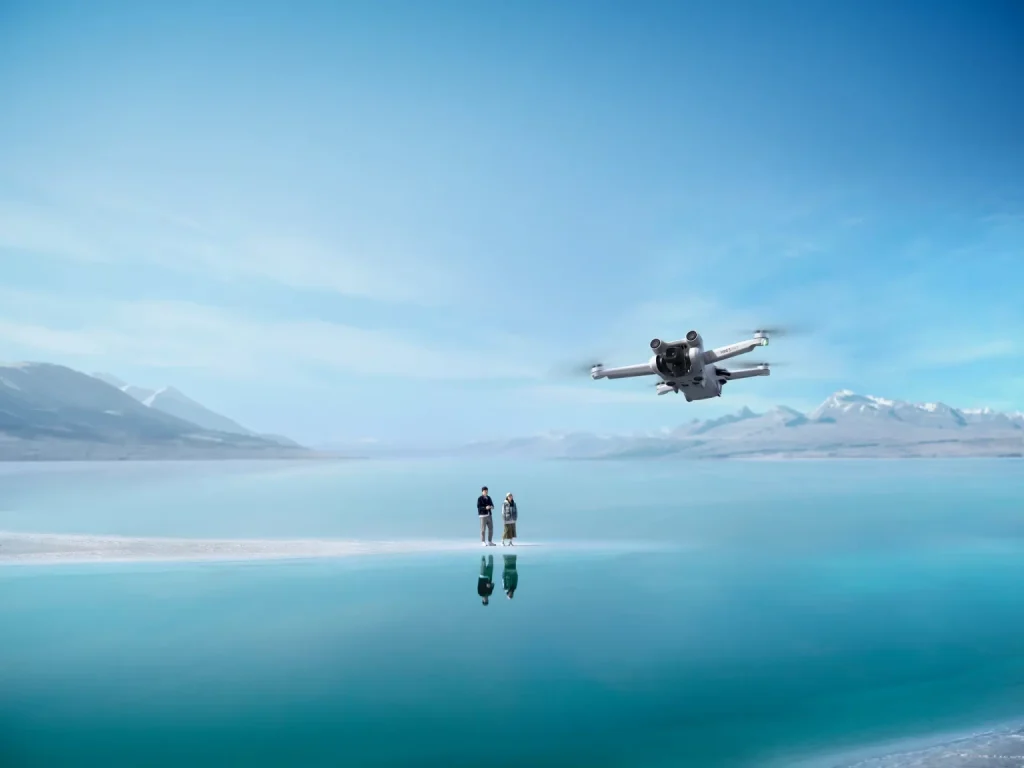
DJI Mini 3 Pro. Photo credit: DJI
DJI Mini 3 vs Mini 2 vs Mini 3 Pro: Conclusion
The most professional drone is the DJI Mini 3 Pro. It has 4K 60fps on the large 1/1.3″ CMOS sensor and also features obstacle sensors and APAS 4.0.
You can also use MasterShots with the Mini 3 Pro drone, which automatically records cinematic video movements for you. There is no MasterShots function on the other two models, but you do have several creative functions such as Helix, Dronie, Rocket, Circle and Boomerang. In theory, these are enough to quickly make some good and cinematic videos. Tracking objects is also only possible with the Mini 3 Pro, while with the Mini 3 and Mini 2 you have to do it manually. In a way, the Mini 2 and Mini 3 are the best drones to learn to fly, because you have to do almost everything manually and without obstacle sensors. Meaning, you need to pay extra attention to what you are doing.
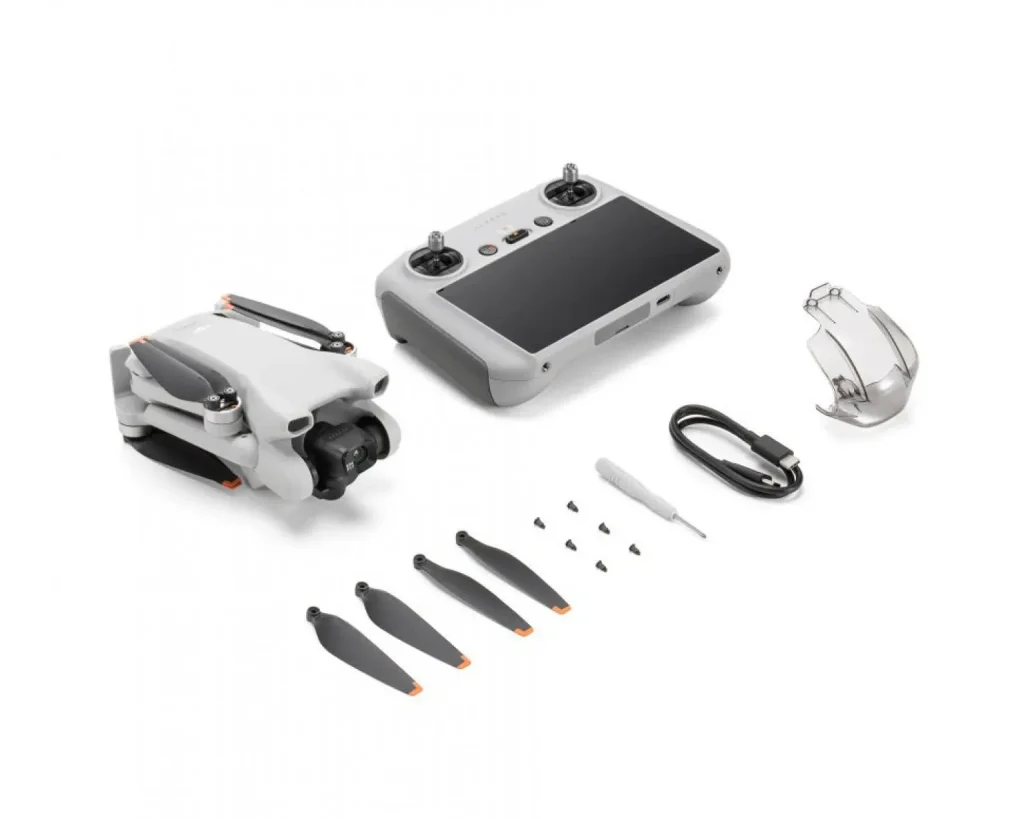
DJI Mini 3 Package. Photo Credit: DJI
If the above features are functions that you would probably never use, you could already eliminate the Mini 3 Pro.
The biggest difference between the Mini 3 and Mini 2 is the sensor. This is larger on the Mini 3 and will therefore provide better quality. The Mini 3 flies the longest (on the standard battery) of all three models (38 min). The Mini 3 and Mini 3 Pro have the unique function of physically turning the gimbal vertically and upwards. Vertical filming and photographing without loss of quality is perfect for the Social Content creators. Filming upwards provides extra creative options, and it is nice to see that this has also been incorporated into the cheaper Mini 3.
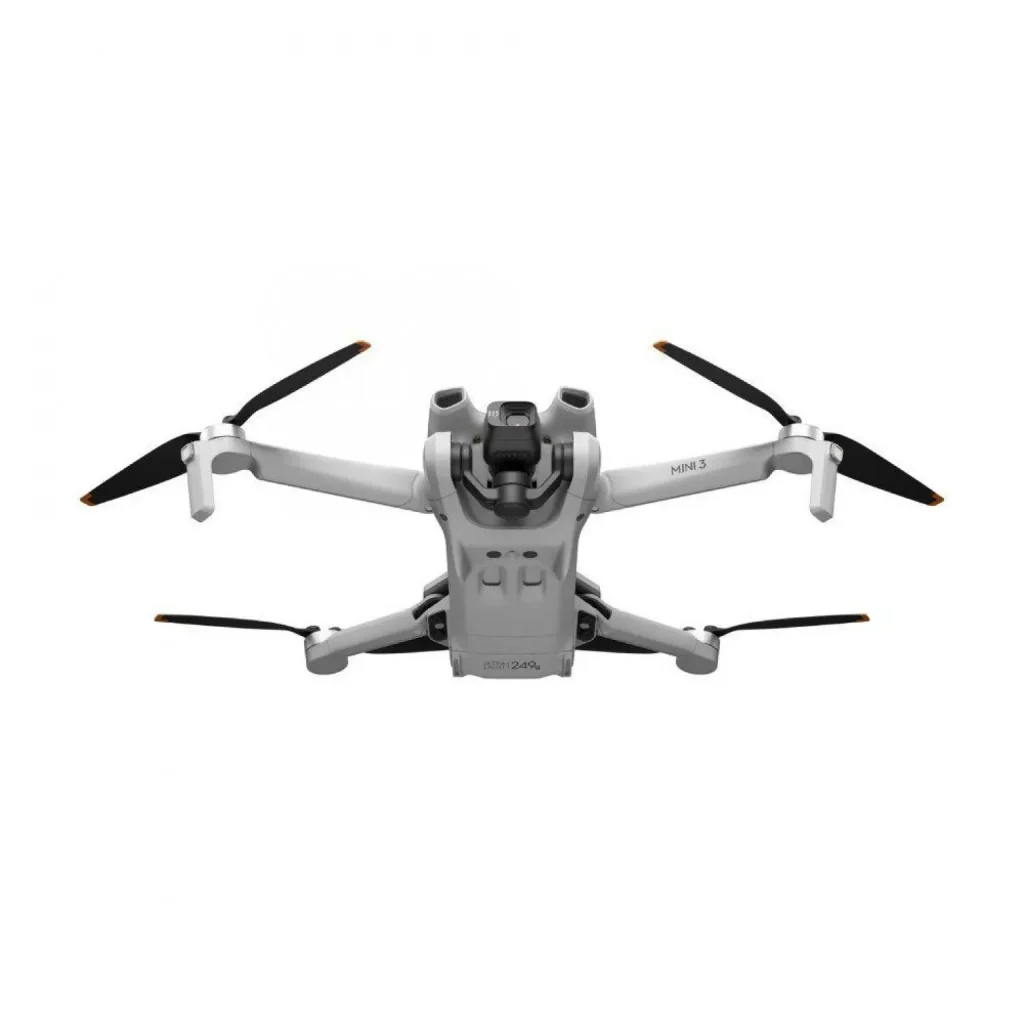
DJI Mini 3 drone. Photo credit: DJI
It is a pity that the Mini 3 cannot film in 4K 60fps, but gets stuck at 30fps. DJI probably did this to make a clear difference between the Mini 3 Pro and Mini 3. With the Mini 2 you still have a good drone for taking quick photos and videos, but the Mini 3 takes it a bit further in most aspects.







